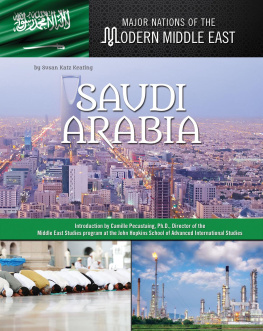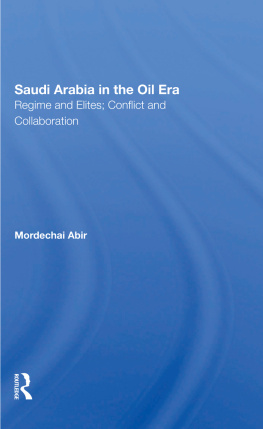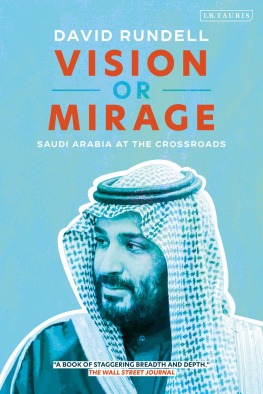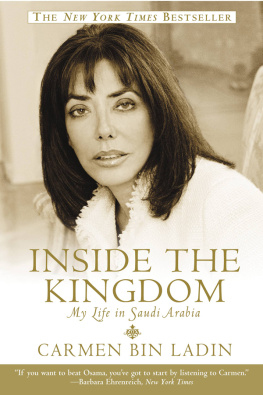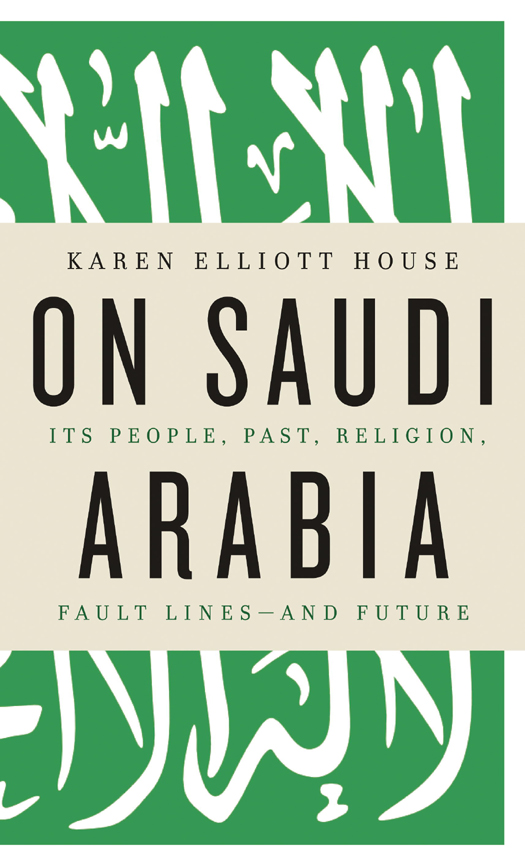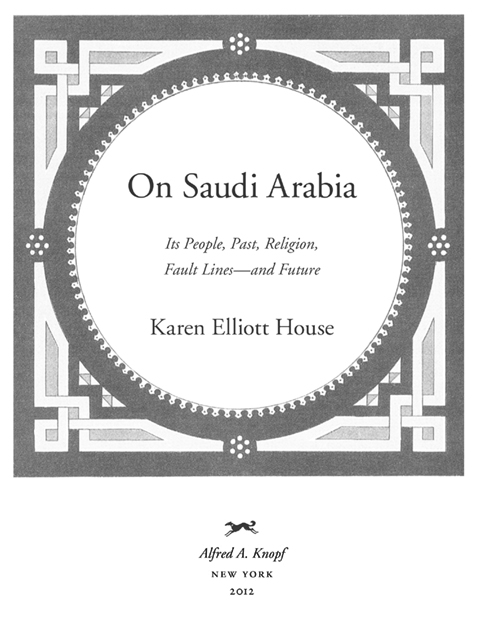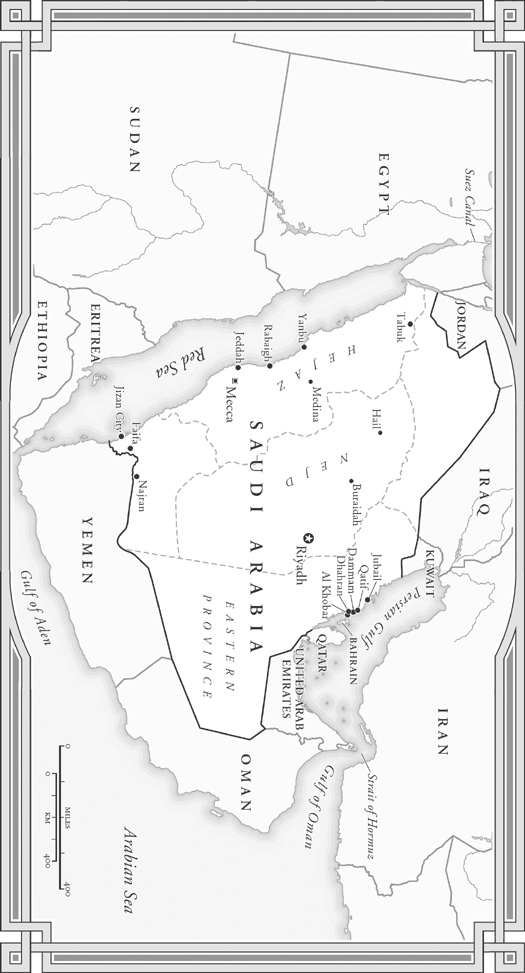
THIS IS A BORZOI BOOK
PUBLISHED BY ALFRED A. KNOPF
Copyright 2012 Karen Elliott House
All rights reserved. Published in the United States by Alfred A. Knopf, a division of Random House, Inc., New York, and in Canada by Random House of Canada Limited, Toronto.
www.aaknopf.com
Knopf, Borzoi Books, and the colophon are registered trademarks of Random House, Inc.
Library of Congress Cataloging-in-Publication Data
House, Karen Elliott.
On Saudi Arabia : its people, past, religion, fault lines, and future / by Karen Elliott House.1st ed.
p. cm.
Includes bibliographical references.
eISBN: 978-0-307-96099-3
1. Saudi ArabiaCivilization. 2. Saudi ArabiaPolitics and government. 3. Saudi ArabiaSocial life and customs. 4. Saudi ArabiaReligion. 5. Al Saud, House of. I. Title.
DS 215. H 68 2012
953.8dc23 2012018977
Jacket image: Exactostock/Superstock
Jacket design by Jason Booher
Map by David Lindroth
v3.1
CONTENTS
PREFACE
W hen I first began visiting Saudi Arabia nearly thirty-five years ago as diplomatic correspondent for The Wall Street Journal, my focus was on the kingdoms role in the Middle East issues that affected the security of the United StatesArab-Israeli peace, Iran-Iraq War, Gulf War, and oil production and pricing. Saudi Arabia clearly mattered; yet the Saudi people did not matter much to me.
Over the decades, as I encountered more ordinary Saudis, I became fascinated by their passivity, their unquestioning acceptance of rules laid down by elders, teachers, religious scholars, and their Al Saud rulers, who have governed the kingdom on and off for nearly three centuries. How, I kept asking myself, could people be so docile, so unquestioningly obedient? These were not, after all, enslaved people living under tyrannys lash. Nor were they primitives on some uncharted island.
I understood from personal experience the impact of rigid religion, authoritarian parents, and isolation from the wider world. I grew up on the hot, barren plains of the Texas panhandle, so similar to Saudi terrain, in a small town where, as in Saudi Arabia, religion defined daily life and where the only available social events were attending one of the towns four churches several times a week. Those churches were all Protestant, of course, ranging from our Church of Christ, which forbade any musical instruments, to the relatively more liberaland we were told sinfulMethodists who were rumored to dance in their church basement.
In my family, strictly ruled by a loving but authoritarian father, we were forbidden to play games with cards or dice; we had no telephone or television; and shorts were banned as immodest dress. Alcohol was not allowed in our home or, indeed, anywhere in our county. Ours was a family in which on any important issue the wife was seen but not heard, and that expectation was the same for a daughter. Matador, Texas, with its population of nine hundred, was isolated enough that very few of my neighbors had ever been to a big city, flown on an airplane, or encountered a Roman Catholicmuch less a Jew or a Muslim.
It was a way of life that held little resemblance to that of most Americans, but was remarkably similar to what I found in Saudi Arabia. The pervasive Muslim religion was different, of course, as were the language, the dress, and many of the Arab customs like the endless cups of bitter coffee and sweet tea served to a visitor. Yet, I also discovered on my early Saudi travels that a stranger could be as welcome and well treated in a remote Saudi desert town as were the strangers my father brought home for Sunday lunch after church. Saudi society, strict in virtually every sense, was also welcoming to a young woman journalist. Over time I grew less interested in Saudi Arabia as an oil-rich and influential country, and more and more determined to understand the Saudi people and the lives they ledand what that portends for the future stability of a country feared by many for the terrorists it has spawned but so essential to the West for the oil it provides.
Paradoxically, Saudi Arabia achieves a remarkable degree of anonymity. Its fate is so important to the rest of the world and the world is so vested in maintenance of its status quo that its almost as if talking about Saudi Arabia might jinx that stability. Thus, as unrest in the Middle East and the toppling of lesser regimes consumed global attention in 2011, Saudi Arabia was largely ignored. Indeed, when President Barack Obama delivered a major speech on the Middle East in late spring, the words Saudi Arabia were never mentioned.
Saudi Arabia is a difficult country to visit, much less to understand. Driven by curiosity, I have visited the country repeatedly since I retired from active journalism in 2006 to explore and explain this shrouded society that is the antithesis of open, individualistic Western societies. This book is the result of those five years of deep diving. In the course of them I have traveled throughout the kingdom, a country nearly three times the size of my native Texas, spent time in villages as well as cities, interviewed paupers as well as princes, conservative Muslim imams as well as modern reformers, young as well as elderly, and women as well as men.
The last are important because contrary to what many might think about a foreign woman reporting in a male-dominated and gender-segregated society, my gender proved to be a genuine advantage. By and large, as a Western woman I had access to men, even some of the most religiously conservative ones, who met with me so long as I was appropriately shrouded in my floor-length abaya and head scarf. As a woman I also had a degree of access to traditional Saudi women that would have been impossible for any man. Often, I would visit a Saudi home to sip coffee and converse with my male host and his friends in one room and then move to another room to chat over dates and tea with the women of the household. As the intrepid early English Middle East explorer Gertrude Bell discovered more than a century ago, for all practical purposes of access in that society, the Western woman in Saudi Arabia is treated as a third sex.
This book focuses on the lives of individual Saudis and how they are shaped and suppressed by traditions and authorities, whether religious figures, tribal elders, or princely rulers. This web of traditions and rules means that women are not free but neither are men. Both sexes are trapped by societal expectations. As a result, individual initiative and enterprise are virtually nonexistent. Society is a maze in which Saudis endlessly maneuver through winding paths between high walls of religious rules, government restrictions, and cultural traditions. Men must obey Allah and women must obey men. As a result, all too few Saudis have the energy, enterprise, curiosity, or confidence even to try to leave this labyrinth. However, in recent years, information via the Internet and youthful demands are penetrating the labyrinth and threatening the very foundations of these walls.
Outside Saudi Arabia, the 2011 Arab Spring has left many once seemingly stable Arab regimes in varying states of turmoil. While much of the world focused its attention on the fall of Arab dictators, the turmoil that transfixed the Al Saud was the assault on the monarchy in Bahrain. To the Al Saud, Arab dictators come and go but dynastic monarchies are sacrosanct. Royals are beloved by their people and, of course, by Allah, both of whom they serve. Bahrain was a mirror in which this Al Saud myth was being shattered. Frightened that the fall of one small royal domino could expose Saudi Arabia, the Al Saud dispatched Saudi troops to shore up their fragile fellow royals. For the moment, at least, the monarchies have survived.


